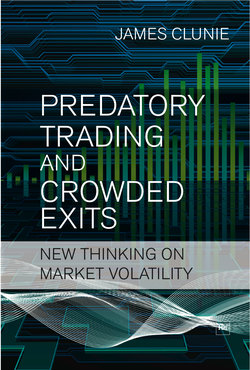Читать книгу Predatory Trading and Crowded Exits - James Clunie - Страница 6
На сайте Литреса книга снята с продажи.
Introduction
ОглавлениеImagine the following situation. You are a trader who understands the relationship between two similar assets. That relationship appears out of line with its historical pattern and little has changed in the way of fundamentals over the past few months. You place the trade, hedging one asset against the other. Now, you only need to wait for convergence…
But it doesn’t happen.
The trade moves the other way and you are now nursing a painful loss. No matter, you think, the fundamentals remain unchanged and the trade now looks more attractive than ever. You even try to encourage convergence by advertising the attractiveness of this position to other traders.
But then your position falls to an even greater loss. You are reminded of your head trader’s favourite piece of advice:
The market will move to the point that causes the maximum pain
It’s beginning to feel that way. If the trade diverges any further you will be stopped out by your own risk controls.
The trade continues to diverge, the pain builds and you are indeed stopped out.
A few days later you see that the two assets have moved sharply back towards their historical relationship. You were correct in your original analysis. But somehow the market had conspired to impose swingeing losses on you.
How did this happen?
Every trader should have a thorough understanding of phenomena such as predatory trading and manipulation; and of liquidity problems that can arise when traders position themselves in a similar fashion to one another. These problems are often understood intuitively, but there is a benefit from understanding the theory behind them and from seeing the evidence of how they work.
In this book, after setting the scene in the first chapter, I look at predatory trading, crowded exits, stop losses and manipulation. In each case, I consider the risks and opportunities that arise for traders.
